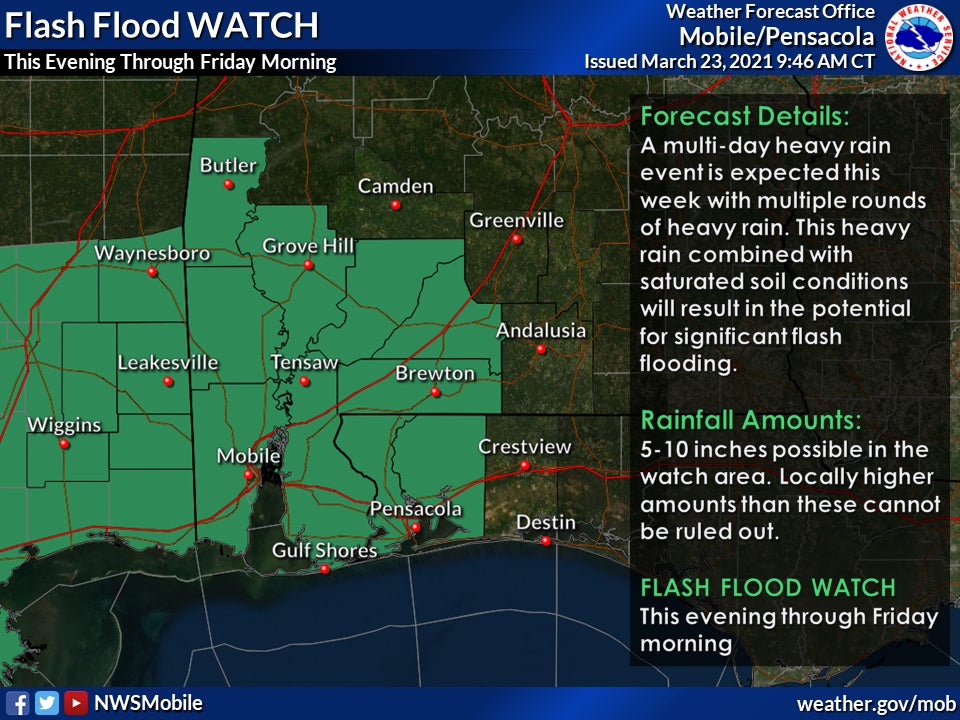Creek name came from village
Published 7:37 am Sunday, October 25, 2009
By Staff
I am continuing with the material of Ethel Hoomes which was written in 1934.
Burnt Corn Creek derived its name from “a large spring, which bursts from beneath the hill below the village of the same name.”
The spring is situated on the old Pensacola trail, and was a noted campground during early Indian times. It was near this spring that the noted half-breed Creek Indian, James Cornells, lived in the early part of the 19th century.
He is the authority of the statement that the name was given because a pile of charred or burned corn was found at the spring, left there by a sick Indian.
Many of the Creeks that were wounded in the massacre at Ft. Mims died at this spring.
Due to her location between these two creeks, Murder and Burnt Corn, Brewton is subject to high water but the greatest trouble she has had with this was the flood that came in March 1929.
It had been raining in that section for nearly a month and the river and both creeks had been at high stages for several weeks.
Early in the morning, March 14, a cloudburst fell and the water was two feet deep in part of the street. This ran off in a little while but this was just a warning to the citizens that trouble was ahead. The merchants began immediately moving goods to higher shelves.
During the day the rainfall was very heavy and by late afternoon the water was on the outskirts of town.
About 7 p.m. the water was two feet deep in town and rain was still falling. Soon the water rushed over the railroad and the water from both creeds met. The employees who were still working saw that the merchandise had not been moved high enough so they began to move it on higher shelves but they could not keep ahead of the water.
By midnight the water was over one’s head in the stores. The main street was a regular river with a very swift current with trees, timbers, bridges, and even houses sweeping down it. The highest stage was reached about 6 a.m. Friday morning, March 15. Daylight revealed a strange sight. Huge gas tanks had floated down the creeks, buildings had disappeared, others had floated down the rivers, bundles of shingles and oil barrels came floating by and the water made strange currents around the streets and buildings. The people who were marooned into the stores during the night were carried in a motorboat to higher land the next morning.
The courthouse and elementary school, being on high grounds, were refugee camps. There the people slept and were fed. Later airplanes brought food, blankets, medicine and newspapers. The National Guard Troops of Evergreen went down and gave valuable aid for some time after the water went down. The Red Cross rendered very valuable help during the emergency and afterwards helped put back on their feet who most needed it.
According to the United States census of 1930, Escambia has a total population of 27,963; 14,406 males and 13,557 females. The total white population is 18,998, the Negroes number 8,558 and total foreign population is only 58. There are 286 citizens 75 years old or older and 9,437 of school age, 7 to 21 years. From 7 to 13 years 89.1 percent attend school and from 18 to 20 years, 15.7 percent attend. There are 10,839 married citizens and only 54 divorced people in the county. The rural population is 22,110. From 1920 to 1930 the county gained 5,449 people.
I will continue with this next week. I hope you are enjoying this. Let me know if you are.




